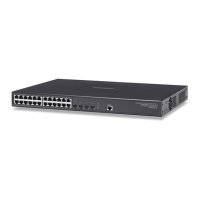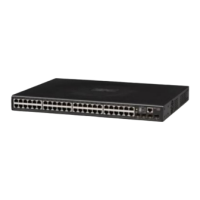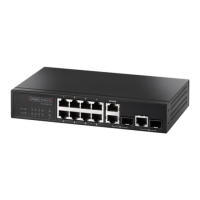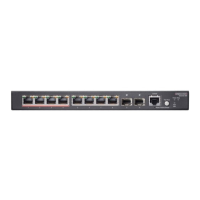C
HAPTER
4
| Configuring the Switch
Configuring the Spanning Tree Algorithm
– 80 –
◆ Admin Edge (Fast Forwarding) – You can enable this option if an
interface is attached to a LAN segment that is at the end of a bridged
LAN or to an end node. Since end nodes cannot cause forwarding loops,
they can pass directly through to the spanning tree forwarding state.
Specifying edge ports provides quicker convergence for devices such as
workstations or servers, retains the current forwarding database to
reduce the amount of frame flooding required to rebuild address tables
during reconfiguration events, does not cause the spanning tree to
initiate reconfiguration when the interface changes state, and also
overcomes other STA-related timeout problems. However, remember
that this feature should only be enabled for ports connected to an end-
node device. (Default: Edge)
◆ Auto Edge – Controls whether automatic edge detection is enabled on
a bridge port. When enabled, the bridge can determine that a port is at
the edge of the network if no BPDU's received on the port.
(Default: Enabled)
◆ Point2Point – The link type attached to an interface can be set to
automatically detect the link type, or manually configured as point-to-
point or shared medium. Transition to the forwarding state is faster for
point-to-point links than for shared media. These options are described
below:
■
Auto – The switch automatically determines if the interface is
attached to a point-to-point link or to shared medium. (This is the
default setting.)
■
Forced True – A point-to-point connection to exactly one other
bridge.
■
Forced False – A shared connection to two or more bridges.
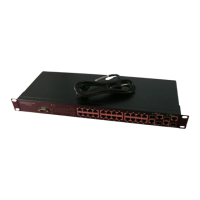
